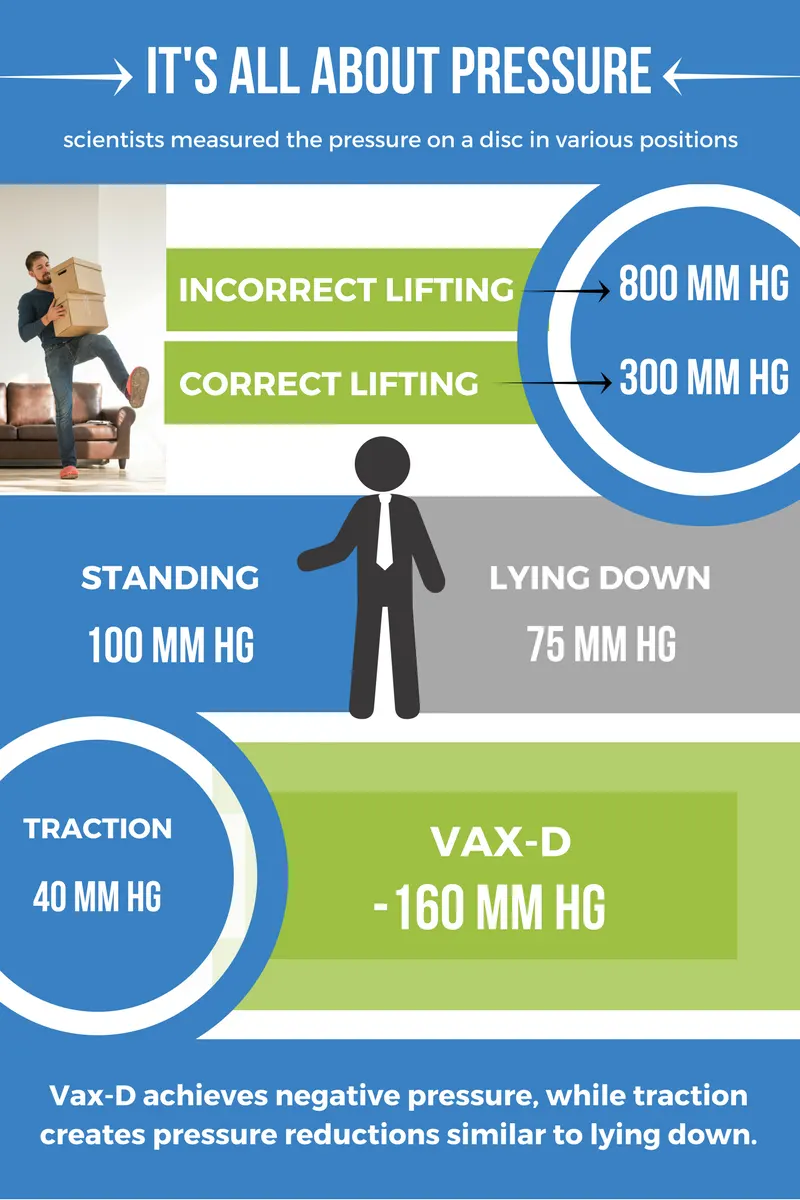 Non-surgical spinal decompression was introduced to Minnesota by Team Health Care Clinic years ago. Since then, we have continued to successfully perform this treatment protocol for people with back pain with Vertebral Axial Decompression (VAX-D). In our clinic alone, there have been hundreds of patients that were spared surgery by completing VAX-D services.
Non-surgical spinal decompression was introduced to Minnesota by Team Health Care Clinic years ago. Since then, we have continued to successfully perform this treatment protocol for people with back pain with Vertebral Axial Decompression (VAX-D). In our clinic alone, there have been hundreds of patients that were spared surgery by completing VAX-D services.
Since that time we have seen many clinics come and go claiming they have spinal decompression services. It was the “wild west” with even simple traction units being touted as spinal decompression. But what is spinal decompression and how is better or different than simple traction?
Spinal Decompression Reduces Pressure on Lumbar Discs
When it comes to spinal decompression, it’s all about the pressure reduction achieved. Much like gauging the air pressure in a car tire, scientists have been able to measure the pressure on a disc in various positions. What they found is as follows:
Notice that traction does not create a negative pressure on the disc. In other words, traction in the form of inversion tables, intersegmental traction units and many other devices claiming to be spinal decompression, are creating pressure reductions similar to lying down. No negative pressure means no suction effect and that means little chance of decompressing degenerative and herniated discs.
VAX-D is Superior to Others
Non-surgical spinal decompression uses a machine that is proven to create a negative pressure on lumbar discs. There are few, if any, other thank VAX-D. Beware — many will claim they have research that proves negative pressure is achieved. However, when pressed to see the research, a few different schemes are discovered to overstate the research.
One technique is to use VAX-D research as their own. They will show the research only when pressed for it and explain that the copycat device is similar to VAX-D so they claim it as their own.
A second approach is to do research on cadavers. Other than the fact that any positive effect from decompression is too late for these subjects, there are obvious flaws in drawing any conclusions from this research.
Our bodies have receptors that create a stretch reflex when a force is applied to it. For example, if someone is pulling your leg to stretch your hamstring, at some point your muscle will resist the force to avoid injury. In cadavers, this reflex is absent so the researches can apply any distractive force and find erroneous positive results. Don’t be fooled by this scheme.
Be an educated consumer and ask questions before agreeing to proceed with your doctor’s recommendation for non-surgical decompression. Determine how they define “decompression” and ask for research to support their claims.
Finally, investigate its track record and its success rate. Look past splashy marketing and grand claims. Five years ago, the Twin Cities metro was saturated with full page ads for decompression services. Almost 100% of those marketing campaigns were not able to stand the test of time and are now noticeably absent.
Consider VAX-D for non-surgical spinal decompression. It is well researched, has a greater than 15-year track record, and is 80% successful in patients that had failed all conservative treatments. It also has research that confirms it creates negative pressure on the discs of live subjects.
Is it Right for Me?
VAX-D has been a proven “positive negative” for hundreds of our patients. If you have been diagnosed with a lumbar disc degeneration or herniation, consult your provider to determine if VAX-D is right for you.


